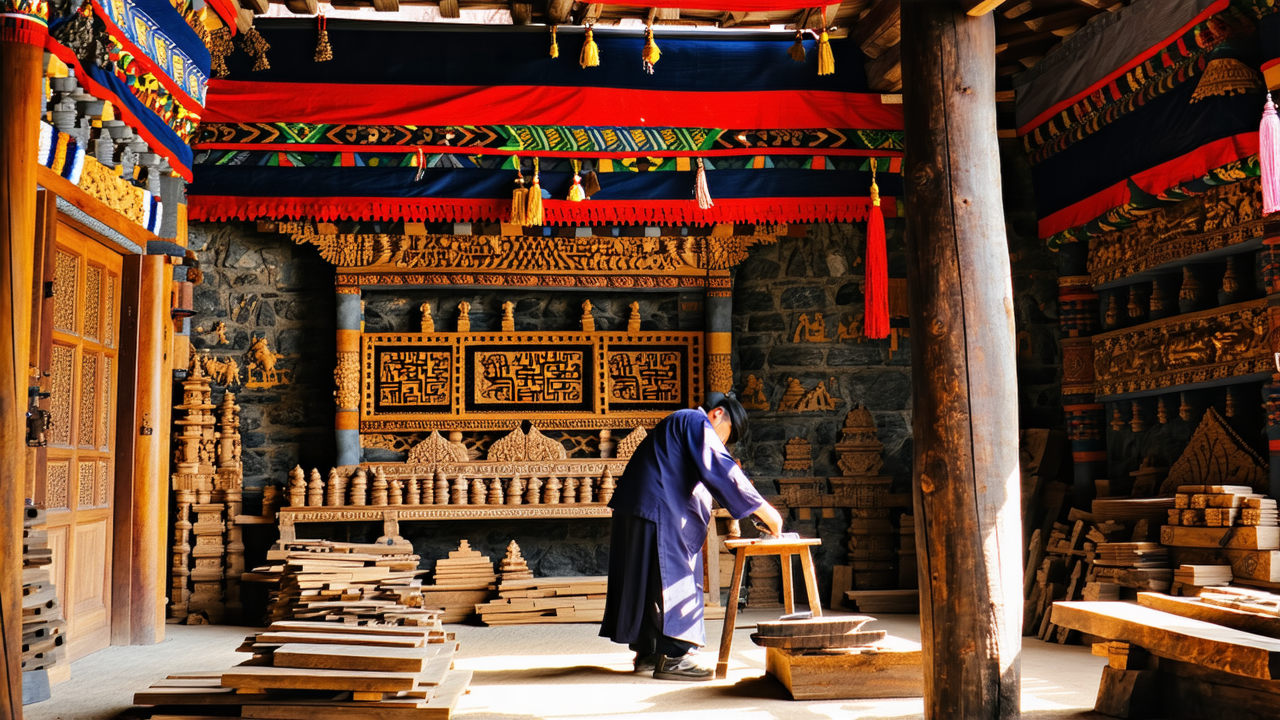60 Years of Splendor: The Charm of New Tibet | Carving a New Future with Intangible Cultural Heritage
Carving a New Future with Intangible Cultural Heritage
In the remote village of Wai Chong in Jiangda County, Chamdo Prefecture, a remarkable transformation is underway, thanks to the revitalization of a 300-year-old intangible cultural heritage — the Poroguzi Woodblock Carving Technique. With the support of China Huadian Corporation, this once-neglected art form is now a driving force behind the village’s economic revival and a model for rural revitalization in Tibet.
Early in the morning, as mist lingers over the Jinsha River, the rhythmic tapping of chisels echoes from the village’s woodcarving workshop. At 64, Zepai, a national-level intangible cultural heritage inheritor, is teaching young apprentices the ancient craft. Holding a chisel with the worn handle, he recalls how this tool, once nearly discarded, now provides a living for the entire village. Behind him, a 1,200-square-meter workshop buzzes with activity as over 20 artisans work on orders for the Gan Zhu'er Sutra — a sacred text in Tibetan Buddhism.
For many villagers, this art form was not only a source of pride but also a lifeline. In 2017, the village had only 20 artisans, many of whom earned less than 1,000 yuan per month. Young people had largely abandoned the craft, leaving the tradition at risk of fading into obscurity. However, the arrival of Huadian’s party members in 2018 marked a turning point.
Recognizing the potential of the woodcarving tradition, Huadian’s party members formed a strategic partnership with the village, establishing a ‘Party Building + Village Collective Economy’ model. This initiative not only preserved the cultural heritage but also transformed it into a sustainable economic engine. With a total investment of over 6.85 million yuan from the government and corporate donations, the village now boasts a modern workshop, training facilities, and a thriving handcraft industry.
One of the key strategies was securing a 10-year supply contract worth 40 million yuan, ensuring a stable market for the village’s woodcarvings. By promoting the Poroguzi Woodblock Carving at national and international platforms — including the 10th China Public Welfare Project Exchange in Shenzhen — the village has elevated its craft from local curiosity to global recognition.
Today, the village’s annual per capita income has soared from 3,600 yuan in 2017 to over 14,000 yuan in 2025. Over 100 skilled workers have been trained, many of whom are former migrant laborers who have returned home to learn the craft. The Poroguzi Woodblock Carving has not only revitalized the village but also become a symbol of cultural preservation and economic empowerment.
As the village continues to grow, the integration of traditional art with modern enterprise models has opened new opportunities. The Musong Handicraft Company has expanded its operations to include Tibetan incense production, calligraphy, and tourism, creating a comprehensive economic model that benefits the entire community.
With its success, Wai Chong has become a beacon of hope for rural development in Tibet, proving that cultural heritage, when nurtured properly, can be a powerful tool for both preservation and prosperity.
Keywords:
Carving, Cultural Heritage, Rural Revitalization, Party Building, Poroguzi Woodblock, Tibet
